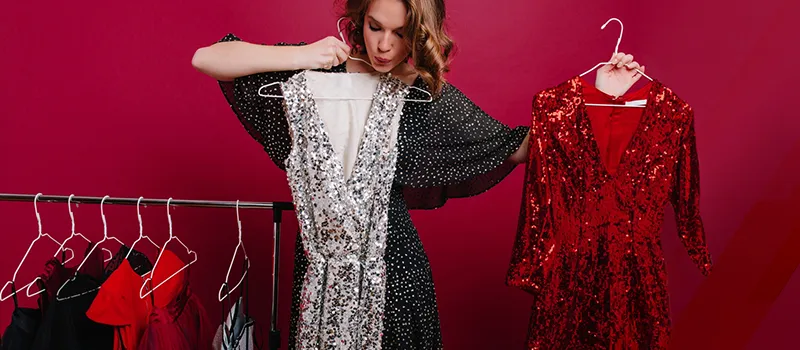Fast fashion has been a trending word worldwide for some time now but what does it really mean? Is it more than just a piece of trendy clothing that attracts influencers, stars, young population alike or is it more than that?
Knowing what we're up against is also helpful as we continue to push the fashion industry to evolve toward a more ethical and sustainable future. Let’s take a closer look at the fabric of this gravitating topic, shall we?
What is Fast Fashion?
Fast fashion is a strategy in the fashion industry that prioritizes the fast production and distribution of clothing. It involves the creation of large amounts of garments, utilizing inexpensive materials like synthetic fabrics, and replicating current trends. The goal is to provide consumers with affordable fashion options.
The phrase was created to characterize the quick cycle of clothes manufacturing and consumption that currently powers the fashion sector.
The fast fashion business model is characterized by high volume, low cost, and quick turnover. By using factories in nations with cheaper labor costs, brands can make garments swiftly and affordably. However, this has raised concerns about the industry's involvement in unfair labor practices, worker exploitation, and environmental destruction.
Fast fashion is frequently criticized for harming both people and the environment, and many customers want fashion companies to use more ethical and sustainable business practices.
Nevertheless, the hype for fast fashion is not slowing down anytime soon. According to Kings Research, the Global Fast Fashion Market is anticipated to hit USD 167.50 billion by 2030, at a CAGR of 7.70% from 2023 to 2030. These statistics are a clear indication of the rapid adoption of fast fashion among the population globally.
Tracing the Roots of Fast Fashion
Clothes shopping used to be regarded as a special occasion. During particular seasons of the year, consumers would save money to purchase new clothing. Fashion shows, which featured new clothing lines and collections months before they reached the stores, provided style-conscious people with a sneak peek into the future trends.
This started to shift when shopping turned into a leisurely activity and spending on apparel surged in the late 1990s. Fast fashion was introduced with the intention to make consumers believe they were wearing fashionable clothes similar to those seen on the runway or worn by celebrities. These inexpensive and trendy imitation garments were produced in large quantities at a low price.
Fast fashion is enabled by advancements in fashion retailers' supply chain management. The goal is to produce affordable clothing quickly, keeping up with rapidly changing consumer preferences. This allows people to wear trendy clothes without breaking the bank.
The idea of category management, which fast fashion adheres to, connects the producer and the customer in a relationship that is profitable for both parties. This kind of cooperation is necessary given the speed at which fast fashion is produced as it is crucial to streamline and speed up supply chain operations.
Major Advantages of Fast Fashion
Profitability for producers and merchants:
Customers visit stores more frequently as a result of the regular introduction of new products, which leads to increased purchases. Instead of replenishing its inventory, the shop switches out items that sell out for new ones.
As a result, buyers are aware that they should buy the thing they like as soon as they see it, regardless of the price, because it won't be around for long. Additionally, it's simple to lure customers back into stores or online to make new purchases because the clothes are inexpensive.
Rapid Availability:
Fast fashion has made it possible for customers to get the things they want when they want them. Additionally, it has reduced the cost of clothing—and not just any clothing, but creative, fashionable clothing.
Affordability:
Even those with limited financial resources can regularly purchase fashionable, new attire, indulge in fun purchases, and wear something unique each day.
Fashion Democratization:
The rich and famous are no longer the only ones who can afford the newest styles, to be "well-dressed", or to have a huge wardrobe. Anyone can seem attractive, often inspired by people from ordinary backgrounds who became Instagram fashion influencers and promote affordable yet trendy outfits.
How Do Big Brands Captivate Audiences with a Vogue Magazine Vibe?
Big brands like H&M, Zara, UNIQLO, GAP, Forever 21, Topshop, Esprit, Primark, Fashion Nova, and others tapped into one basic desire of people- to look good at an affordable price.
Everyone wants to look good, wearing the best clothes possible as if we are on the pages of a Vogue magazine, right? What if this is possible, and also way cheaper than you could imagine – sounds irresistible, right?
This is exactly what brands involved in fast fashion do.
In June 2023, H&M unveiled 10 breakthrough innovations in sustainable fashion. The Swedish company is committed to making fashion more sustainable and these innovations are a step in the right direction for the brand.
One of the most interesting innovations is the Nanoloom, which spins graphene into biodegradable, nontoxic fabric. Graphene is a material made from a single layer of carbon atoms and it is extremely lightweight, flexible, waterproof, and strong. Nanoloom's fabric is made from recycled graphene, which is even more sustainable.
The brand has also introduced DyeRecycle, an innovative method that extracts dye from old clothing using sustainable chemical processes. The extracted dye is then restored and reused, resulting in a reduction of emissions by 85% and a 60% decrease in water usage compared to conventional dye production.
Zara is another brand involved in the fast fashion industry. The ability of Zara to quickly develop, create, and deliver new clothes to stores is the company's key competitive advantage. This is made possible by the business's short supply chain, which is headquartered primarily in Spain and Portugal.
In as little as four weeks, the designers at Zara can take a sketch of a garment and put it on the racks. With such a quick turnaround, the brand is able to keep up with the most recent fashion trends while giving customers several options.
Another major tactic employed by Zara is to maintain reasonably cheap costs. With multiple companies lining up to bag the first position in fast fashion, it is all set to witness massive growth.
Walking the Ramp
A diverse approach is necessary to address the complicated problem of quick fashion. The apparel sector has to adopt more ethical and environment-friendly methods, cut waste, and improve supply chain transparency. On the consumer side, people can make more responsible decisions by choosing durable clothing, recycling old clothing, or endorsing ethical and sustainable fashion companies.




